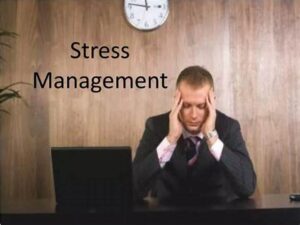Learn powerful techniques to manage stress promote relaxation and improve your overall well-being.
 We have all felt stress and its effects. After all, the experience of feeling threatened and unable to manage stress can significantly impact how we think, feel, and behave.
We have all felt stress and its effects. After all, the experience of feeling threatened and unable to manage stress can significantly impact how we think, feel, and behave.
Short-term, manageable stress levels can help us grow our resilience to future challenges and motivate and energize us to act. And yet, chronic, ongoing stress can harm us physically and mentally, impacting our relationships with ourselves and those around us (Boniwell & Tunariu, 2019).
This article explores stress, its impact, and the risk of burnout. We then explore techniques, exercises, and tips to help us reduce its harmful effects and reframe how we see pressure while regaining our sense of control.
Before you continue, we thought you might like to These science-based exercises will equip you and those you work with, with tools to manage stress better and find a healthier balance in your life.
- Understanding Stress Levels
- What is Stress and What is Burnout?
- How To Reduce Psychological Stress
- 7 Effective Stress Management Techniques
- 13 Skills & Tips to Manage Stress Better
- 3 Further Stress Relief Activities
- Stress Management Worksheets from PositivePsychology.com
- A Take-Home Message
- References
Understanding Stress Levels
While stress in small, infrequent doses may not be harmful, “prolonged stressful living can cause havoc on our physical, emotional, and psychological wellbeing” (Boniwell & Tunariu, .
Indeed, some day-to-day stress is normal, but it is essential to spot when stress levels are too high, too often. Better awareness can be helpful, including watching out for the following physical indicators (WebMD, 2020):
- Tense or painful muscles
Possibly experienced in the shoulders, back, chest, stomach, or head. - Digestive issues
Including nausea, vomiting, diarrhea, and constipation. - Sexual health and wellbeing
Lowered sex drive, impotence in men, and irregular periods in women. - Heart and blood pressure
Increased release of stress hormones (cortisol and adrenaline) putting us in fight-or-flight mode can impact heart rate and blood pressure.
Each physical indicator can become part of our self-awareness and may suggest when stress is getting out of hand.
Some stress counselors use biofeedback technology to assess stress levels, potentially using (modified from Blackett, n.d.):
- Resting heart rate
Heart rate taken at rest is often used to indicate overall fitness, but can suggest a change in stress levels. - Heart Rate Variability (HRV)
HRV is the shift in time between heartbeats. Changes in pattern may indicate the impact of stress levels on our underlying autonomic nervous system. - EEG or brainwaves
Electroencephalograms (EEG) record brain activity. Specific markers can indicate stress. - Breathing assessment
Feeling stressed can be associated with over breathing (breathing more than is needed to meet the body’s needs) or faster, chest-based breathing. - Adrenal assessment
Blood and urine samples can be taken to measure stress hormone levels, such as cortisol and adrenaline. - Skin conductance and skin temperature
Changes to the sympathetic nervous system can be measured in the skin. - Sleep tracking
Quality and quantity of sleep are often impacted by increased stress and are easily monitored through trackers.
Whatever form self-monitoring takes, noticing the early warning signs of burnout and stress can prove helpful in managing our self-care and wellbeing (Bush, 2015).
What is Stress and What is Burnout?
 Small experiences of stressors can result in temporary stress, while helping us face future frustrations, challenges, disappointments, and angst.
Small experiences of stressors can result in temporary stress, while helping us face future frustrations, challenges, disappointments, and angst.
And yet, while such ‘stress inoculation’ is associated with resilience, in excess or too frequent, stress can be damaging to both mind and body (Boniwell & Tunariu, 2019).
Indeed, whether a single event or ongoing, stress can result in several ‘thinking traps,’ including (Boniwell & Tunariu, 2019):
- Jumping to conclusions
These are often unhelpful or unfounded. - Tunnel vision
Limiting our ability to problem solve and move forward. - Catastrophizing
Maximizing the negatives and minimizing the positives. - Casting blame
External or internal assignment of blame. - Overgeneralizing
Minor setbacks specific to one event are applied more widely. - Unhelpful emotional reasoning
We may become more upset than the situation suggests or demands, leaving us anxious and overwhelmed.
Research shows that work can be an extreme source of stress, particularly in high-pressure environments such as healthcare. A 2016 study exploring stress and coping in oncology, suggested that stress levels could be reduced in response to more support from management and better staffing levels (Ko & Kiser-Larson, 2016).
Preventing burnout within the workplace has received much more attention in recent years. And while a unified definition has proven challenging, in 2019, the World Health Organization categorized it as an occupational phenomenon that results from unsuccessfully managed chronic workplace stress (HBR guide to beating burnout, 2021).
Most importantly, they recognized the organization’s role in causing it and their subsequent duty to protect their employees (HBR guide to beating burnout, 2021).
While resilience is often described as the ability to bounce back from difficult times, research suggests there may be more to it than that. Successfully coping with stress typically involves one, or a combination, of the following (Boniwell & Tunariu, 2019):
- Recovery
Our ability to return to and restore normal life at pre-stressor levels of functioning. - Resistance
When we show little or no impact in response to a stressor or stressful event. - Reconfiguration
A return to a new normal. A significant event may change who we are and how we live – positively or negatively.
Unlike recovery and resistance, reconfiguration suggests transformation; rather than returning to pre-stressor function, we travel beyond maintaining or sustaining our old lives.
Accepting a ‘new normal’ can help us reduce psychological stress and move forward.
Attempts to understand why we differ in our response to stress suggest that our sense of coherence (SOC) may also be important in lowering our suffering and experience of difficult emotions (Boniwell & Tunariu, 2019).
Indeed, research suggests that the “extent to which one is confident that internal and external environments are predictable and that there is a high probability that life situations will work out as well as can be expected” is influenced by our (Boniwell & Tunariu, 2019, p. 137):
- Comprehensibility
Our degree of insight into our achievements and difficulties and our awareness of our resources. - Manageability
Our belief that things will work out as we expect and that our resources are adequate and appropriate. - Meaningfulness
Our motivation surrounding our wish to cope and move on.
Additionally, according to Martin Seligman, hope and optimism about future outcomes are vital factors in our overall wellbeing and ability to overcome life’s difficulties. They belong to a “family of strengths that represent a positive stance toward the future.” (Seligman, 2011, p. 260).
7 Effective Stress Management Techniques
 Our ability to manage stress, and create more resilience in our lives, can be helped in several different ways, including:
Our ability to manage stress, and create more resilience in our lives, can be helped in several different ways, including:
Recognizing how we currently deal with stress and anxiety
Stress and anxiety are a part of life. The difference between those that handle such unpleasant feelings well and those that don’t may depend on how they make sense of them (Forsyth & Eifert, 2016).
Understanding how we react and behave when confronted by stressful situations and anxiety can help us recognize how to better manage stress going forward.
Existing stress responses
Ask your client to consider which of the following applies to them (Forsyth & Eifert, 2016):
- Do you run away from or avoid stressful and anxiety-inducing situations?
- Do you suppress or push out feelings that are upsetting?
- Do you distract yourself from stress (keeping busy, eating, drinking alcohol)?
- Do you replace ‘bad’ thoughts with ‘good’ thoughts?
- Do you talk yourself out of feeling anxious, stressed, or worried?
- Do you seek help (therapy, stress-relief books, chatting with friends)?
This list is not exhaustive or judgmental. It is simply a list of some responses–positive and negative–people have to stress and anxiety.
Ask the client to consider which one’s offer short-term relief and which provides long-term support.
Now ask them to consider what they may be missing out on in life. The answers will either lead them to accept that they are successfully managing stress or provide valuable insights for the changes needed.
Changing how we see stressful situations
We may not be able to change our circumstances, but we can see them differently (Forsyth & Eifert, 2016).
Accept – Choose – Take action
Acceptance and Commitment Therapy (ACT) has proven valuable for clients learning to manage anxiety and stress; it encourages (Forsyth & Eifert, 2016):
- Letting go of the struggles that keep them stuck
- Cultivating peace of mind
- Accepting what is, and doing what works
Rather than struggle to reduce stress and anxiety, the client accepts what they are already experiencing and then chooses the direction they would like their life to take. The third step is to take that action and realize their valued life goals (Forsyth & Eifert, 2016).
The following techniques should help the client see and make such changes:
Radical acceptance
Radical acceptance is often practiced within Dialectical Behavior Therapy (DBT). This worksheet teaches the client that they cannot control every aspect of their experience (Linehan, 2015).
Setting goals for radical acceptance helps the client understand how it will help them in their lives.
Challenging core beliefs
Our core beliefs can shape how we face up to the difficult times and how we react to stress (Beck, 2011).
The Core Beliefs Worksheet encourages the client to reflect on how they see themselves and what experiences shape the beliefs they hold. Interpreting stressful experiences through a new belief set can change how they impact the client.
Acceptance of our thoughts and feelings
The goal of ACT is to encourage clients to accept what lies beyond their control and commit to life-enhancing actions instead. The Thoughts and Feelings: Struggle or Acceptance? worksheet helps the client gain more insight into how much control they have over their feelings and thoughts (Harris, 2008).
How we manage our sense of calm
Grounding, meditation, and breathing exercises help manage our general anxiety and stress levels and prepare us for difficult situations (Williams & Penman, 2016; Forsyth & Eifert, 2016).
Meditation for acceptance
Meditation is a powerful tool for accepting stressful situations and difficult emotions. Leaves on a Stream uses a simple mental image to let go of such feelings, our need for control, and difficult issues from the past (Williams & Penman, 2016).
Grounding and centering
This grounding and centering technique helps regulate the body’s responses and avert overriding the nervous system. Purposefully concentrating on self-soothing behaviors can induce comfort during stress and anxiety (Levine, 2008).
